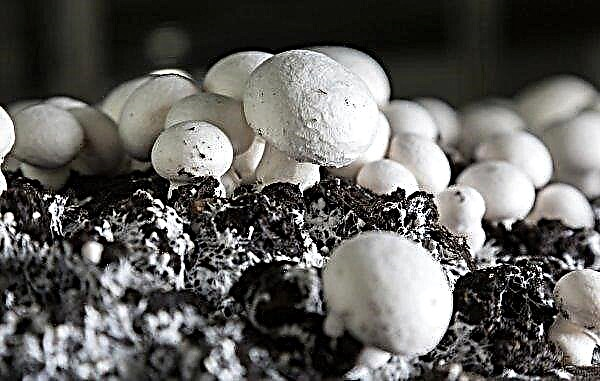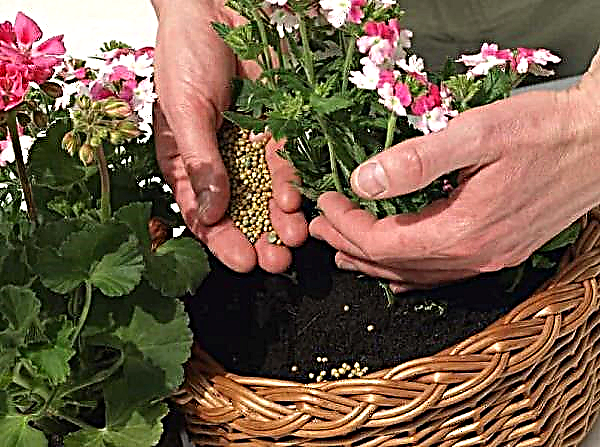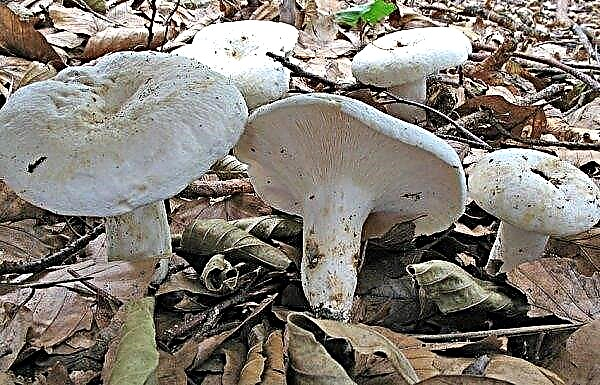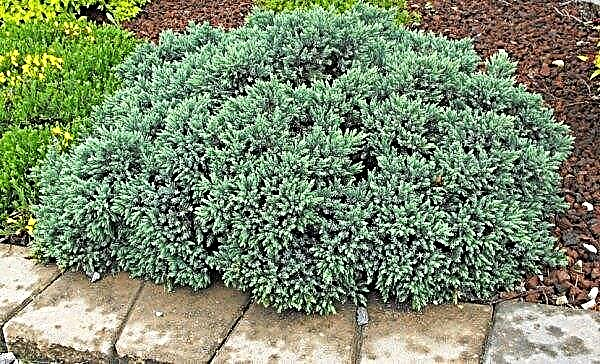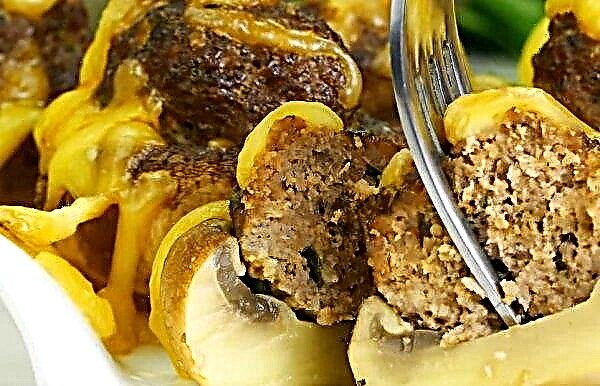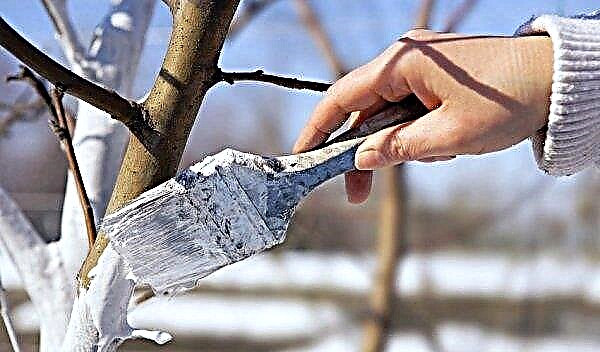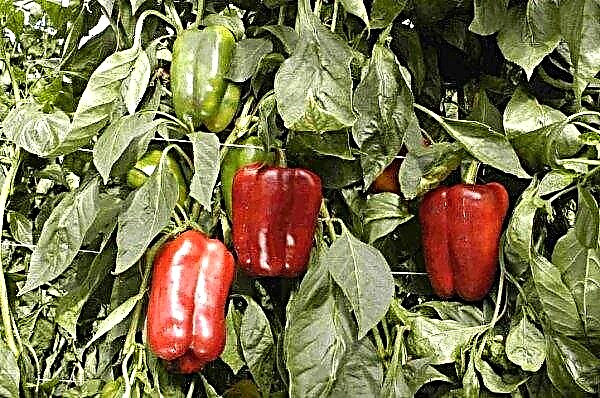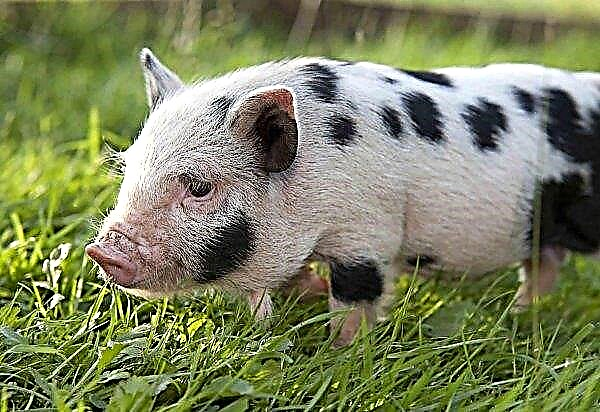Fans of medium-late carrot varieties should definitely pay attention to carrots called “Autumn King”, which is distinguished by excellent taste and external data. With the proper organization of the growing process, there will be no problems with the plant, and what you need to know about the rules for planting and further cultivating root crops of this variety - you will now find out.
Description and region of cultivation
The carrot variety Autumn King is recommended for cultivation in the Central and Central Black Earth region, although in practice it is planted in the southern and even northern regions of the Russian Federation, providing the culture with the necessary shelter. Outwardly, these are aligned, uniformly colored conical fruits of a saturated orange color with a blunt end and a convex head.
Did you know? The heaviest carrot in the world, which fell into the Guinness Book of Records, grew up in the garden of the American gardener Christopher Quali in 2017. The weight of this root crop was 10.18 kg.
The carrots are 16–29 cm long and weigh 150–200 g. The flesh is crispy, but at the same time quite juicy, with a pleasant sugary-honey flavor and no less pleasant aroma. The rosette of the plant is semi-spreading, with long green leaves, small or medium cut.
Grade characteristics
In addition to excellent external data and good taste, Autumn King carrots have many other attractive characteristics that most gardeners will surely like.
Maturity and yield varieties
Being a medium-late variety, the roots of the Autumn King are ready for mass collection no earlier than mid-August, although individual specimens can be dug up at the end of July. On average, at least 110–120 days pass from sowing to harvesting a crop, after which about 5–6.5 kg of root crops are harvested from 1 m² of plantations. Commodity yield - 75–97%.
Disease resistance
Carrots of this variety do not tolerate waterlogging of the soil, especially since in such conditions fungal infections develop very quickly. Fruit rot (black, white, gray) is the main ailment that can affect the crop, but with all the rules of agricultural technology, it is quite realistic to prevent it.
Calorie content and composition of fruits
100 g of Autumn King carrots contain approximately 30–35 kcal, with 11.7–16.4% dry matter and 6.6–9.1% sugar. In addition, at least 22.4 mg of carotene, a very important component for the human body, falls on the same amount of raw substance of the fetus.
In addition, at least 22.4 mg of carotene, a very important component for the human body, falls on the same amount of raw substance of the fetus.
Important! These digital values can be called conditional, since the volume of each substance depends on the conditions for growing carrots: the poorer the land, the smaller and less useful carrots will be.
Pros and cons of the variety
- The most notable advantages of the Autumn King carrot variety include the following characteristics:
- relatively high productivity;
- excellent taste;
- high rates of shelf life (can be successfully stored up to 8 months) and transportability of the collected fruits;
- good commercial qualities, due to the aligned forms of root crops and their rich orange color;
- universality of use (carrots can be consumed fresh, and can be processed for conservation or used in the preparation of various dishes).
As for the disadvantages, the most noticeable will be increased susceptibility to high levels of moisture and the amount of nitrogen compounds in the soil. Because of this, more attention should be paid to watering and the composition of top dressing.
Cultivation agricultural
Compliance with the requirements for agricultural cultivation technology is the main condition for obtaining a high-quality and abundant crop of any crop, therefore, when growing carrots of the Autumn King variety, it is worth knowing about the optimal timing of its sowing, the nuances of preparatory measures and the process technology.
Optimal conditions and terms for landing
In the central regions of carrot cultivation, sowing of seeds in open soil is carried out in late April or early May, as soon as the substrate is sufficiently warmed up. In regions with a mild climate, winter crops of the described carrots are also possible, which are carried out in late October or early November, when temperature values drop to + 5 ° C.
In the latter case, to protect crops from possible early frosts, it is recommended to mulch the surface of the beds with a 3-cm layer of peat. Frosts to -3 ° C are not terrible variety.
Choosing a place and preparing the garden
It is good if the site selected for carrots is moderately sunny, well protected from sudden gusts of wind and possible flooding by groundwater. The optimal soil composition for the Autumn King cultivar is well-aerated loamy, slightly acidic or sandy substrates, on which tomatoes, cucumbers, potatoes, onions, and legumes were previously grown (considered to be the best predecessors). The preparation of the beds for sowing carrots involves pre-fertilizing with complex mineral fertilizers, loosening and leveling the beds, with further organization of the holes. The planting pattern of carrot seeds is 20 × 40 cm, which means a width of 20 cm between adjacent furrows and 40 cm between adjacent beds. Seeds in the furrows are placed at a distance of 2 cm from each other.
The preparation of the beds for sowing carrots involves pre-fertilizing with complex mineral fertilizers, loosening and leveling the beds, with further organization of the holes. The planting pattern of carrot seeds is 20 × 40 cm, which means a width of 20 cm between adjacent furrows and 40 cm between adjacent beds. Seeds in the furrows are placed at a distance of 2 cm from each other.
Seed preparation and planting technology
For quick germination of carrot seeds, they should be properly prepared. This can be done in several ways: for example, 10 days before the proposed sowing on the site, you can pour them into a tissue bag and dig them into the soil, and dig them out several hours before planting and sow them immediately. This is the simplest solution for preparing planting material for carrots, but far from the only one.
It is a little more difficult to perform bubbling, which involves pre-soaking the seeds in warm water (oxygen must be supplied to them) with further aging in the refrigerator (at least 4 days). After such cooling, carrot seeds are poured onto a clean surface and left to dry.
Important! The most convenient option for sowing carrots seeds of the Autumn King variety is the use of special ribbons with seeds (individual seeds are located at a distance of 3–3.5 cm). With this planting, further care will not require thinning seedlings, as plants will evenly develop.
The process of planting carrots consists of several main stages:
- Loosening the soil layer.
- Organization of planting furrows in accordance with the above scheme and their moistening.
- Placement of treated seeds with a 2-centimeter interval between adjacent seeds.
- Seeding terminations with a 2-centimeter layer of soil (the maximum possible depth for this variety) and post-planting irrigation.
 Before the first young shoots appear, it is advisable to place a film shelter over the beds, thereby providing greenhouse conditions for carrots.
Before the first young shoots appear, it is advisable to place a film shelter over the beds, thereby providing greenhouse conditions for carrots.Care Features
As in other cases, post-planting carrot care provides for the organization of irrigation, compliance with the feeding regimen, periodic thinning of seedlings and loosening of the soil between rows. It is also worth paying attention to the fight against carrot pests and diseases, because otherwise they can significantly harm the crop.
Watering
Since carrots are water-loving plants, but at the same time do not tolerate stagnation of water, the introduction of fluid into the soil should be performed often, but in small portions. Sufficient moisture content of the substrate plays a significant role at any stage of cultivation of the Autumn King cultivar, but it is especially important in the transition period from sowing to the appearance of the first seedlings, as well as in the process of intensive mass gain by the root crop. The ideal time for watering carrot beds is in the evening, when the surface layers of the soil are no longer covered with a dense crust due to exposure to sunlight, and the beginning of the irrigation season for carrots is chosen taking into account weather conditions and the level of humidity.
The ideal time for watering carrot beds is in the evening, when the surface layers of the soil are no longer covered with a dense crust due to exposure to sunlight, and the beginning of the irrigation season for carrots is chosen taking into account weather conditions and the level of humidity.
Most often, the introduction of fluid begins in May and ends about 2-3 weeks before the collection of root crops: this avoids their massive cracking. In a dry summer, without timely and regular watering, you will not be able to get juicy and large carrots.
Fertilizer application
Root crops of the Autumn King cultivar cannot tolerate the presence of fresh organic matter in the form of manure, therefore urea (10–15 g), superphosphate (30–40 g) and potassium chloride (15–20 g), which are calculated per 1 m² of plantings during the spring digging of beds.
After 20–25 days after the appearance of young seedlings, you can feed the plantings with a small amount of nitrogenous fertilizers, and after another 15–20 days, apply phosphorus-potassium compounds to the soil, calculated as 15–20 g per 1 m².
Thinning
The first thinning of seedlings is carried out approximately a week after the emergence of young plants, and so that between adjacent carrots there is at least 1-2 cm of free space. The second time the procedure is repeated after the formation of 4-5 true leaves on the seedlings, but now no less than 4-6 cm remain between the neighbors.
Did you know? The longest officially registered carrots were raised by American James Crowe. The length of the miracle vegetable was 4 m 57 cm, although most of it was occupied by long and thin “tail”.
While the carrots are small, it is not very convenient to remove excess specimens with your fingers, so it is better to use tweezers, trying not to tear out young plants nearby.
Video: how to thin out carrots
Pest and Disease Control
The carrot variety Autumn King is notable for its good resistance to popular carrot diseases and pests, but this does not mean that the likelihood of such problems in the growing process is completely absent. Of the insects, the carrot fly usually annoys the plant, and as for diseases, it is first worth remembering the fruit rot, which often manifests itself during storage of the harvested crop.
In the first case, Karate, Intra-Vir, or Volaton chemicals will be an effective method of pest control, but to protect root crops from rot, it is worth using Skor or Miksan-V preparations for processing (use is possible similar products with the same effect).
As an effective prevention, it is important to comply with crop rotation requirements (sow carrot seeds only after the “desired” predecessors like cucumbers or legumes), control the level of soil moisture and respond in a timely manner to the slightest signs of disease development or pest activity.
Harvesting and storage
Selective harvesting of carrots The Autumn King is already held at the end of July, but for planting the crop for long-term storage, it is worth waiting for the time for the mass harvesting of root crops in mid-August. To keep the carrots longer and not spoil, after removing them from the soil, you need to carefully cut the tops, and lower the strong and undamaged lower part into containers with sand, protecting them from the effects of frost or the attack of rodents.
The best place to store the harvest is a cool and dry cellar with an air temperature in the range 0 ... + 2 ° C and a humidity level of 85–95%. During the first 5 months, all root vegetables will accumulate the amount of vitamin A, thereby increasing their beneficial properties. In the absence of bright sunlight, this benefit will remain for another 2-3 months, the main thing is to periodically inspect the carrots for signs of spoilage and remove unusable specimens in a timely manner.
Carrot variety Autumn King is an excellent solution for those gardeners who want to receive large and juicy fruits for universal use, without spending too much effort on caring for them. The appearance and taste properties of this vegetable make it a worthy competitor to other medium-late varieties of this culture, which can always be seen from our own experience.

